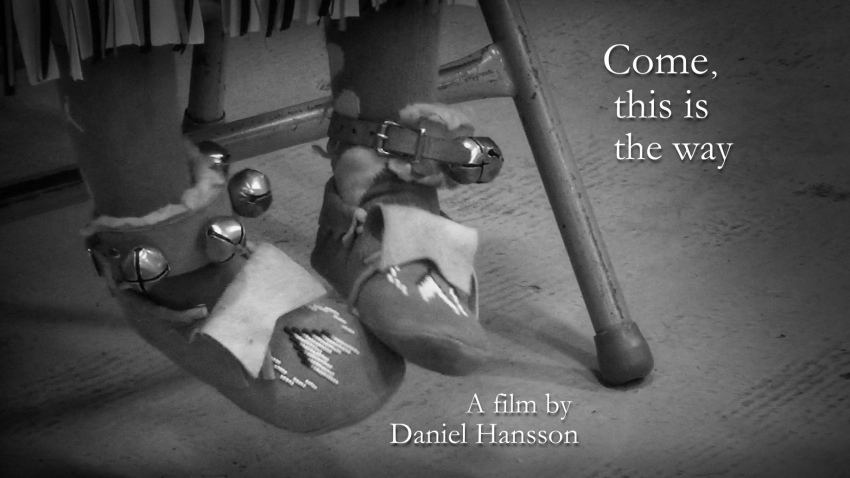Director(s): Daniel Hansson
As part of the Terra Religata project (terra-religata.org), this film was shot at the 2013 Tutxinmepu Powwow in Idaho; an intertribal gathering hosted by the University of Idaho and the local Nez Perc. . . ce Tribe to celebrate the rejuvenation of American Indian culture. This Powwow brought together indians from all over North America in the spirit of drum music and dance; the unifying pulse and life-blood of Native American culture. Behind the camera, I began to perceive the joy and the pain of this celebration of what was once lost and is now being reclaimed in fierce determination to survive after centuries of genocidal persecution and socioeconomic oppression. Especially, I became a witness to the respect and love between the generations – the preservation of civilization itself. The transmission of culture to the Indian children was so moving that I was brought to tears. And this is indeed the way for us to follow. The still near the end of the film of an old man smiling and looking at a baby held by its mother says it all. The man is Ernie Phillip, also know as Danicing Bear; one of the great champions of modern Powwow dancing – something of a legend in his own lifetime. At the same time, “Come, this is the way” is a warning about climate change. I shot the nature scenes in the Clearwater Wilderness at the edge of Idaho’s Rocky Mountains – the ancestral lands of the Nez Perce Tribe. The majestic cedars are sacred to the Nez Perce, just like the coyote, whose singing mirrors the wordless song you also hear in the film. One of these cedars that you see (with a glittering dew drop in the interlude) is approximately 3,000 years old. It is the oldest and tallest tree of the Rocky Mountains, and indeed one of the oldest living organisms on Earth. As illustrated by the forest fire that I filmed in 2012 – the most intense burning season on record in the U.S. Northwest – these trees are under the immediate threat of extermination due to climate change, which is the cause of the increasingly dry conditions on the ancient Nez Perce land. On a different level, I see the forest fire in the film as an allegory for the devastation of Indian culture by the same imperialistic forces that have resulted in climate change. Without profaning the Great Mystery, there are also multiple layers of American Indian symbolism running like threads through the tapestry of the film (e.g. the feather falling to the ground and being raised up again; the movements of water). I made the decision to make the film black-and-white and to use stills to emphasize the intimate and subtle stories and moments that document the cultural transmission, and also for the purpose of creating a resonance with the timeless black-and-white photographs that document the destruction phase of Indian culture as eternal monuments of that which is today brought back to life. The traditional Powwow music in “Come, this is the way”, which I have also recorded and produced, is performed by Vandal Nation, an intertribal drum group at the University of Idaho. One of these singers is Rudy Shebala, a Navajo whom you see in the opening shot, and whose war paint has been restored to its original red in the final shot of the film. The color of the fire that doesn’t destroy the world but instead rejuvenates nature and culture as one. Produced, directed and edited by Daniel Hansson (2014; terra-religata.org). Special thanks to Stefan Jarl for his generous encouragament and editing suggestions. show more
- Beautiful
- Courageous
- Fascinating
- Informative
- Ingenious
- Inspiring










Mohammad9 years ago - Edited
Excellent !
Mohammad9 years ago - Edited
Excellent !
Kelly9 years ago - Edited
Is a great film, I found it wonderful, powerful, moving. Inspires thought. Its powerful without words, the subject and faces, tell the story.
Kelly9 years ago - Edited
Is a great film, I found it wonderful, powerful, moving. Inspires thought. Its powerful without words, the subject and faces, tell the story.
Kelly9 years ago - Edited
Is a great film, I found it wonderful, powerful, moving. Inspires thought. Its powerful without words, the subject and faces, tell the story.
Kelly9 years ago - Edited
Is a great film, I found it wonderful, powerful, moving. Inspires thought. Its powerful without words, the subject and faces, tell the story.
Kelly9 years ago - Edited
Is a great film, I found it wonderful, powerful, moving. Inspires thought. Its powerful without words, the subject and faces, tell the story.
Kelly9 years ago - Edited
Is a great film, I found it wonderful, powerful, moving. Inspires thought. Its powerful without words, the subject and faces, tell the story.
Kelly9 years ago - Edited
Is a great film, I found it wonderful, powerful, moving. Inspires thought. Its powerful without words, the subject and faces, tell the story.
Kelly9 years ago - Edited
Is a great film, I found it wonderful, powerful, moving. Inspires thought. Its powerful without words, the subject and faces, tell the story.